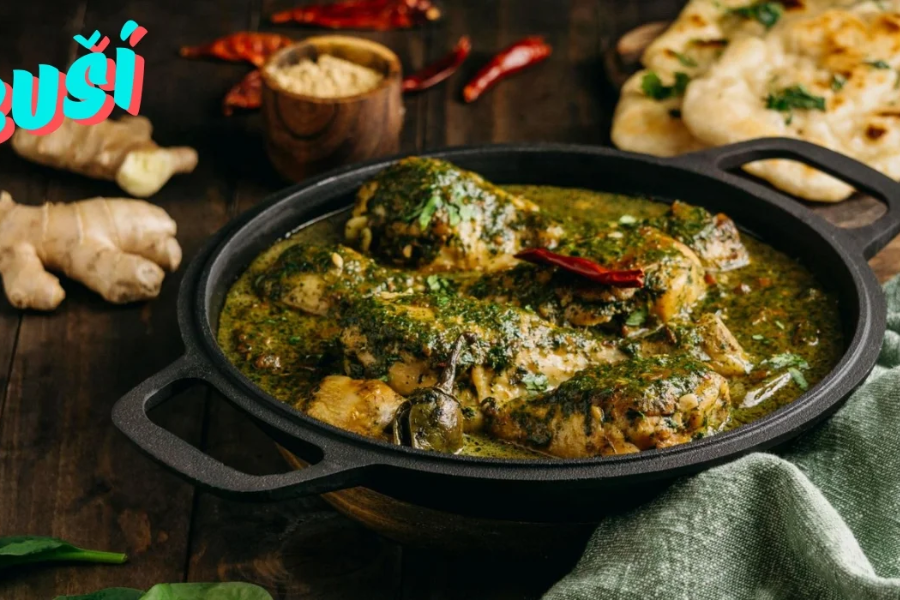Buší: A Tasty Journey through Eastern European Cooking in 2024
What is Buší?
Buší, in its culinary context, is a traditional Eastern European dish that holds a deep cultural and historical significance. While the term “Buší” may have roots in botanical classifications, within the kitchen, it refers to a hearty, flavorful dish with a long history in rural kitchens across Eastern Europe. Originating as a humble meal created from simple, readily available ingredients, Buší has grown into a beloved culinary symbol that connects generations.
Origins of Buší: A Culinary Legacy
Tracing Back to Ancient Roots
Buší’s history dates back to ancient times, where it was a staple in the kitchens of rural Eastern European communities. At its core, the dish was developed out of necessity, using whatever ingredients were available to create something both nourishing and delicious. Peasant families relied on Buší during harsh winters and abundant harvest seasons, making it a dish that could sustain entire communities. The original recipes for Buší were simple, using grains, vegetables, and sometimes meat. Over time, the dish evolved as new influences and regional specialties were incorporated into the recipe.
Cultural Significance
Buší is not just a dish—it’s a symbol of Eastern European culture and tradition. Passed down through generations, the act of preparing and sharing Buší fosters a strong sense of community. It’s often made for family gatherings, holidays, and celebrations, symbolizing the unity of family and friends. Many families treasure their unique Buší recipes, handed down with care and adapted by each new generation, ensuring that the dish maintains its place in the heart of their culinary traditions.
The Evolution of Buší: From Tradition to Innovation
Traditional Methods Meet Modern Flair
Despite its traditional roots, Buší has managed to evolve while staying true to its original essence. Today, chefs and home cooks alike continue to prepare Buší, though modern interpretations often include new ingredients, cooking methods, and presentations. Some cooks experiment with different cooking techniques, such as sous-vide or grilling, while others enhance the flavors with exotic spices. These innovations keep Buší relevant in contemporary kitchens without detracting from its time-honored appeal.
Regional Variations
As Buší spread across Eastern Europe, it took on many regional variations, each reflecting the unique ingredients and culinary traditions of the area. In some regions, Buší might be rich in herbs and spices, while in others, it might lean toward a simpler, more rustic preparation. Some versions are more meat-heavy, while others focus on vegetables and grains, depending on local availability and cultural preferences. No matter the variation, each iteration of Buší offers a delicious glimpse into the diverse culinary landscape of Eastern Europe.
The Enduring Popularity of Buší: A Culinary Icon
Beloved by All
Buší has won over the hearts and taste buds of food lovers around the world. Its simplicity, versatility, and rich flavor profile have made it a beloved dish, suitable for both everyday meals and special occasions. Whether served at family dinners, festivals, or culinary events, Buší continues to captivate audiences with its comforting taste and historical charm.
Culinary Tourism
In recent years, Buší has become a focal point for culinary tourism. Travelers from all over the world flock to Eastern Europe to experience the authentic flavors of this traditional dish. Culinary tours centered around Buší offer visitors a unique opportunity to explore local markets, learn from master chefs, and savor the dish in its native setting. These experiences provide a deeper appreciation of Buší’s cultural significance and historical context.
Benefits of Buší
Health Benefits of Buší
Buší is not only delicious but also packed with health benefits. Rich in antioxidants and essential nutrients, it can support immune function, aid digestion, and boost energy levels. The dish often incorporates wholesome ingredients like vegetables, grains, and lean meats, providing a balanced and nutritious meal. Additionally, Buší’s anti-inflammatory properties make it a popular choice for those seeking natural remedies for various ailments.
Environmental Benefits of Buší
In addition to its health benefits, Buší promotes sustainability. The ingredients used in Buší are often locally sourced, supporting sustainable agriculture and reducing the carbon footprint of food production. Moreover, the plant from which Buší takes its name, Busius maxima, is a renewable resource, further contributing to environmental conservation efforts. By choosing Buší, consumers can enjoy a delicious meal while also supporting eco-friendly practices.
How to Enjoy Buší
Cooking with Buší
Cooking Buší at home is both an enjoyable and rewarding experience. The dish’s versatility allows it to be incorporated into a wide variety of meals. Traditionally, Buší is slow-cooked to bring out the full depth of its flavors, but modern recipes often include quicker methods for today’s busy lifestyles. Buší leaves and blossoms can be used in soups, salads, or stir-fries, adding a unique taste and aroma to each dish.
Beauty and Skincare Uses of Buší
Buší has found its way into the beauty and skincare industry as well. Buší extracts are valued for their hydrating and anti-aging properties, making them a popular ingredient in moisturizers and facial masks. Rich in antioxidants and nutrients, Buší can contribute to healthier, more radiant skin when used in beauty routines.
Buší in Traditional Medicine
Historical Use of Buší in Traditional Medicine
For centuries, Buší has been used in traditional medicine to treat a variety of ailments, including fevers, digestive issues, and skin conditions. Ancient cultures recognized the healing properties of Buší and incorporated it into herbal remedies, which were often passed down through generations.
Modern Applications of Buší in Healthcare
Today, the therapeutic potential of Buší continues to be explored by researchers. Studies suggest that Buší may have anti-cancer properties and benefits for cardiovascular health and diabetes management. As scientific interest in Buší grows, it is likely to play an increasing role in modern healthcare.
Cultivation and Harvesting
Growing Buší Plants
Buší plants thrive in warm, humid climates with well-drained soil. They can be grown from seeds or cuttings and require regular watering and sunlight. Whether grown on a small scale by home gardeners or large-scale by commercial producers, Buší is a relatively low-maintenance plant, making it an accessible option for cultivation.
Harvesting Buší Leaves and Flowers
The leaves and flowers of the Buší plant are typically harvested by hand when they reach maturity. To ensure sustainable harvesting practices, care is taken to preserve the plant’s natural habitat. This involves rotating harvesting areas and using techniques that do not harm the overall health of the plant population.
Buší: An Economic Resource
Buší as a Renewable Resource
Buší stands out as a renewable, biodegradable, and non-toxic resource. Its cultivation supports eco-friendly practices by reducing reliance on harmful chemicals and promoting biodiversity. As consumers increasingly seek sustainable alternatives, Buší is poised to play a major role in various industries, from food production to cosmetics and textiles.
Sustainable Practices in Buší Harvesting
Sustainable harvesting methods are essential for ensuring the long-term viability of Buší. This includes adhering to local regulations, minimizing waste, and supporting fair trade initiatives. By following these practices, the Buší industry can contribute to both environmental conservation and social equity.
Culinary Delights with Buší
Recipes Featuring Buší
Buší’s versatility makes it an exciting ingredient for a wide range of recipes. Traditional dishes highlight its rich, earthy flavors, while modern recipes experiment with new combinations and presentations. From Buší-infused smoothies to savory Buší pesto, there’s a dish to suit every palate.
Buší-infused Beverages
Buší can also be used to create refreshing beverages, such as Buší tea or lemonade. These drinks not only tantalize the taste buds but also provide a boost of antioxidants and other nutrients, making them a healthy and delicious option.
The Future of Buší
Emerging Trends in Buší Usage
As interest in sustainability grows, so too does the demand for Buší. From eco-friendly packaging to Buší-based textiles, innovative uses for this versatile plant are constantly being explored. These trends point to a promising future for Buší in industries beyond food, offering solutions to some of today’s most pressing environmental challenges.
Innovations in Buší Cultivation and Processing
Advances in Buší cultivation and processing methods are making the plant more accessible and sustainable than ever before. Techniques such as vertical farming and bioengineering are helping to increase production while reducing environmental impact. These innovations ensure that Buší will continue to thrive as a valuable resource for generations to come.
Conclusion
Buší is much more than just a dish—it is a symbol of sustainability, cultural heritage, and environmental stewardship. Whether you are looking to improve your health, reduce your ecological footprint, or simply enjoy a delicious meal, Buší offers something for everyone. Its rich history, cultural significance, and wide range of applications make it a truly remarkable and valuable resource. Join the Buší revolution today and discover the endless possibilities of this extraordinary plant.
FAQs
- Is Buší difficult to make at home? Buší may seem complex, but with the right ingredients and instructions, it can be made at home with relative ease. Many traditional recipes are straightforward and can be adapted to different skill levels.
- Are there vegan versions of Buší? Yes, vegan versions of Buší can be made using plant-based ingredients such as mushrooms, legumes, and various vegetables. These versions are equally delicious and nutritious.
- What are the key ingredients in traditional Buší? Traditional Buší typically includes grains like barley or wheat, vegetables such as cabbage and carrots, and sometimes meat like pork or beef. Herbs and spices are used to enhance the flavors.
- Can Buší be stored for later consumption? Yes, Buší can be stored in the refrigerator for a few days and can also be frozen for longer periods. Rehe






